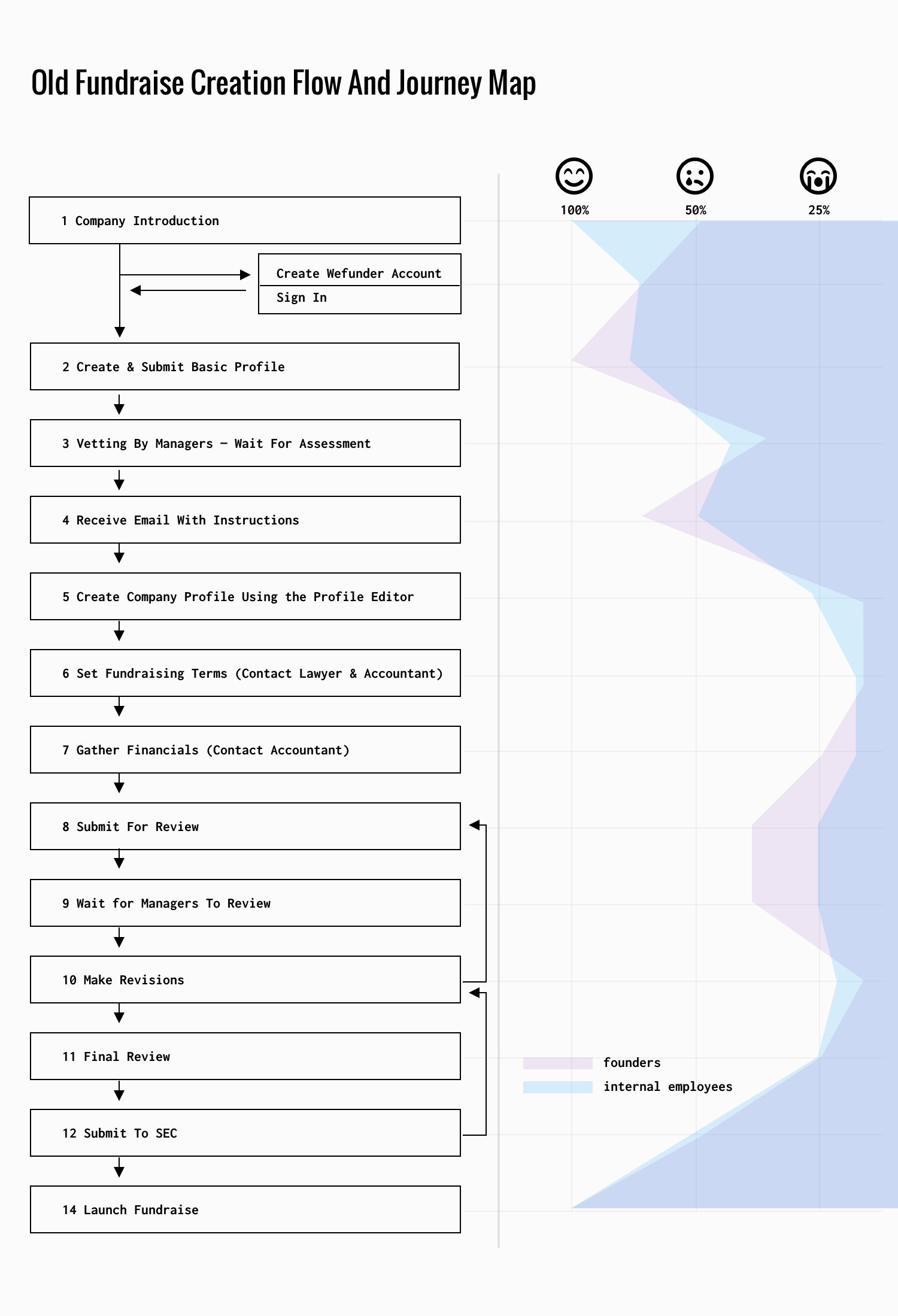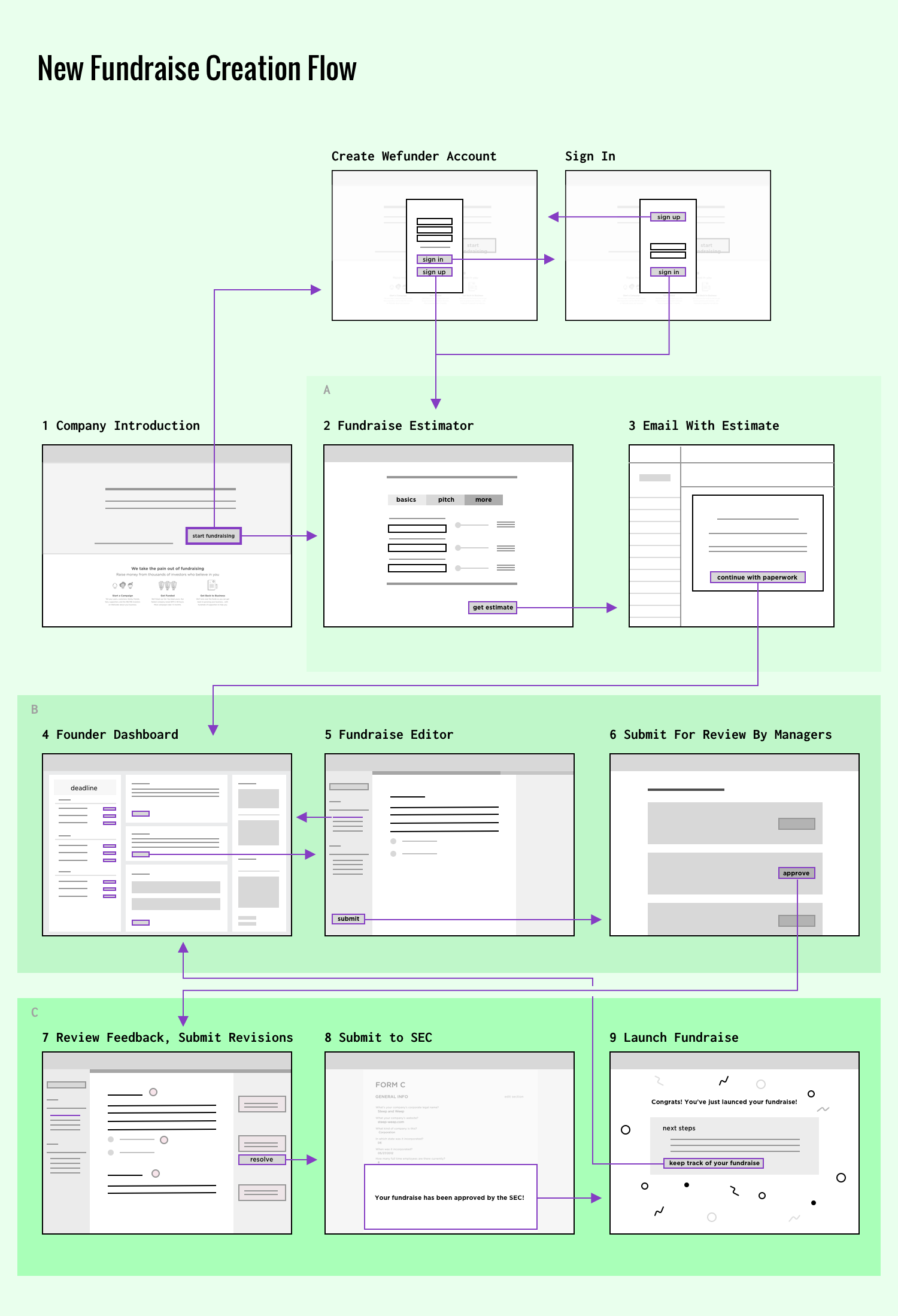Improving the Fundraise Creation Experience
As an equity crowdfunding platform, Wefunder serves two main groups of customers — those who want to invest in promising new opportunities and those who are looking for funding to support their ventures. I began this project after identifying how unhappy internal employees involved in fundraise launches were, and set out to determine how their experience could be better designed. As I dug deeper into the issue, I realized that there are important underlying issues with how we managed fundraises in general which contributed to the symptom of dissatisfaction among employees.
Opportunity
My instinct upon first thinking about the problem was that the communication between parties involved (employees, founders raising funds) were compromised by an antiquated process and inadequate planning. Thus I saw this as an opportunity to improve the entire process both internally and externally. For founders who choose to raise money from the crowd instead of from traditional Venture Capitalists, especially those who have never raised funds before, how can I make the fundraise setup process transparent, predictable, and painless? Additionally, how can I simplify the process for the Wefunder fundraising team so they can use their time more efficiently and be able to scale their output?
The business value for Wefunder in streamlining the founder experience lies in the chance to feature a larger supply of high quality companies with founders who are willing to use Regulation Crowdfunding to fundraise. Accomplishing this would mean an influx of interested investors as well. Furthermore, building a more efficient internal process improves company morale, which leads to happier employees and increased creativity.
High Level Goals
- Increase overall number of fundraise sign ups
- Increase number of company launches from 4 to 8 per month
- Improve communication rapport with founders
- Increase transparency of the filing process
- Decrease the average time it takes founders to file a Form C by 50%
- Decrease overall number of support emails from founders asking general questions about the fundraise process
Identifying Painpoints
I started out by interviewing everyone on the team to hear their anecdotal experience and understanding of the fundraise creation process. It was clear immediately that there was no consistent language used among team members and everyone had a slightly different conception of the company rules and standards for communicating with interested founders.
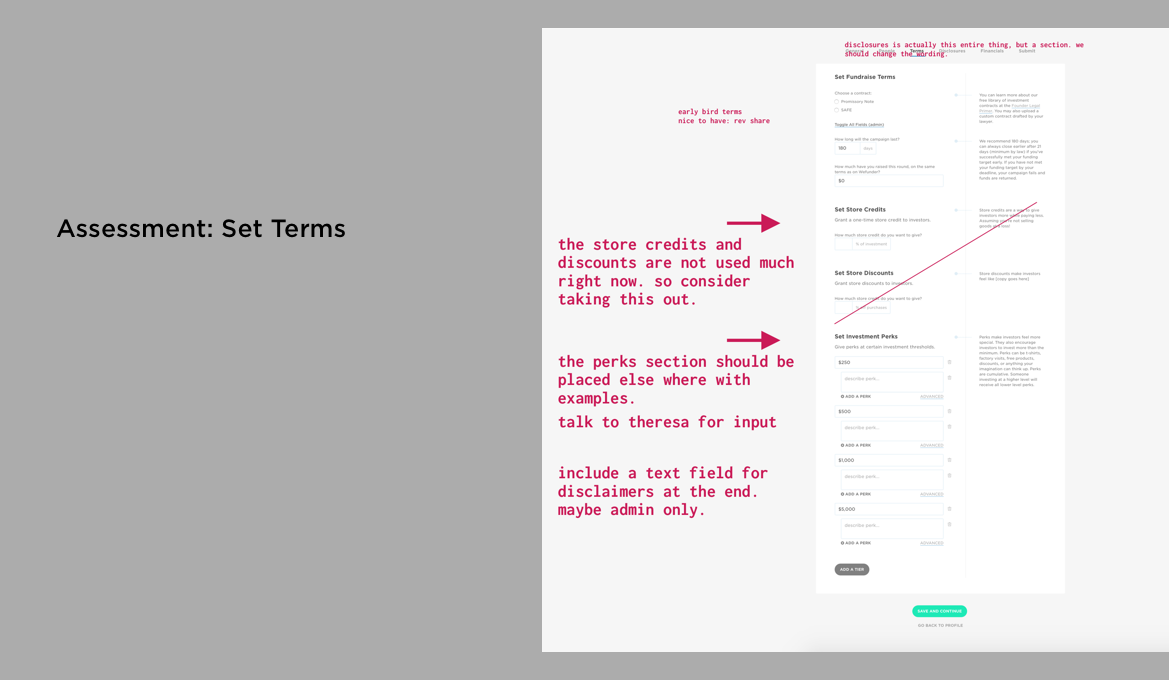
Next, I watched how interested founders attempted to sign up to raise money on the Wefunder platform using the FullStory tool, and reached out to 20 specific users in phone interviews to better understand their experience. I was curious about how our support requests reflected the issues I observed to be plaguing the process and dove deep into support tickets to learn more.
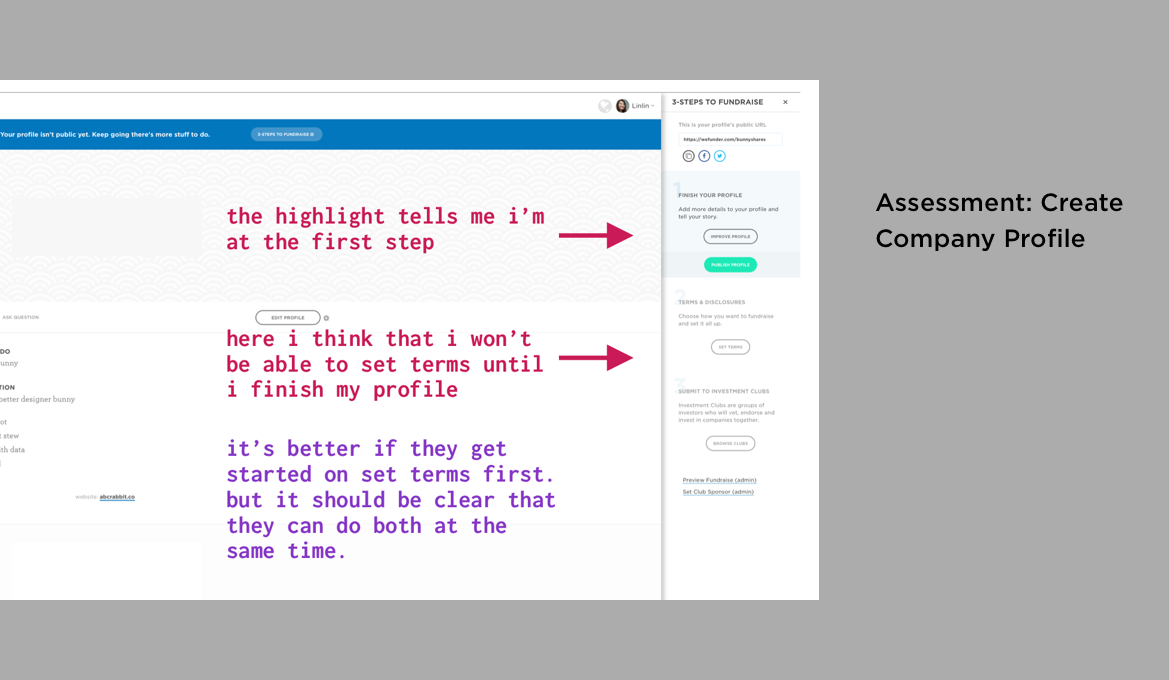
This journey map shows all of the steps that founders and the Wefunder team went through to set up a fundraise. The user experience for both declined rapidly after the founder submitted their company for review on the Wefunder.
In some instances, it took up to two weeks for founders to receive a response from the team telling them how to proceed. Even after founders started building their fundraise, the process seemed endless and harrowing because they had no idea how many steps there were. Moreover, each step look longer to complete because of inconsistent communication and lost messages.
On the other hand, Wefunder team members were manually handling each case and did not share a common language when referring to important steps and documents. Their process was poorly cobbled together, using bandaids to fix individual blemishes rather than developing a cure to the disease. They were worked to the bone with little to show for it. Unfortunately, the more they worked this way, the more debt they accrued in time and resources. It was important that the team broke out of this self-destructive cycle quickly.
Defining User Requirements
It was clear the team needed a better process, a set of shared vocabulary to communicate with each other and to founders, and a better tool to review submissions, answer questions, and identify errors. The founders craved transparency in what’s required, responsiveness from the Wefunder team, and agency in managing their fundraise creation process.
Creating Task Flows
I analyzed the process by first studying the rules set out by the SEC for Regulation Crowdfunding and then meeting with the CEO to discuss his high level vision for how the platform should serve users and the needs and wants of our users I learned in my research. Once we had a good understanding of where we wanted to take the product, I refined the task flows and cut out extraneous steps to lessen the time founders would spend sitting around twiddling their thumbs as they wait to hear back from the team.
In order to give founders more agency over their own fundraises, I proposed to the CEO that we devote development resources to update the existing company profile creation tool with robust features like in-line commenting and responding, setting deadlines, and suggesting what to tackle next. Additionally, I proposed that we create a dashboard for founders so they can have an overview of their fundraise creation progress (and fundraise progress after it goes live!) and use it as a central screen to view any messages and updates from the team regarding their progress.
I backed up these proposals with data about how much time the team was spending on support with founders to handle issues that could be mitigated by having messages transmit through a central locale (rather than through multiple mediums like face to face meetings, email, and phone). Additionally, the engineering team was spending precious time building fixes to the barely-functioning existing tools for fundraise creation (created in 2013 before regulation crowdfunding became legal); I argued that their time would be better spent building a tool that is scalable and is specifically designed for founders who want to leverage crowdfunding.
Explorations
Below are some of my explorations for this project. I investigated every variation involved with fundraise creation for founders after the signup step. Because my goal was to lessen the burden on the Wefunder team while maximizing the founders’ agency in the fundraise creation process, I was mindful of where potential bottle necks were and worked closely with the fundraise team.

Final Design
The new fundraise flow includes updated UI, a new founder dashboard, the ability to set deadlines, an inbox to view messages with the Wefunder team in context of the discussed subject matter, detailed steps to show the entire process with all required materials, and a launch date estimator to help founders schedule marketing campaigns.
For the Wefunder team, the new flow helps them keep all their messages to a founder in one place and view the progress of each founder in the pipeline so they can plan for launches early.
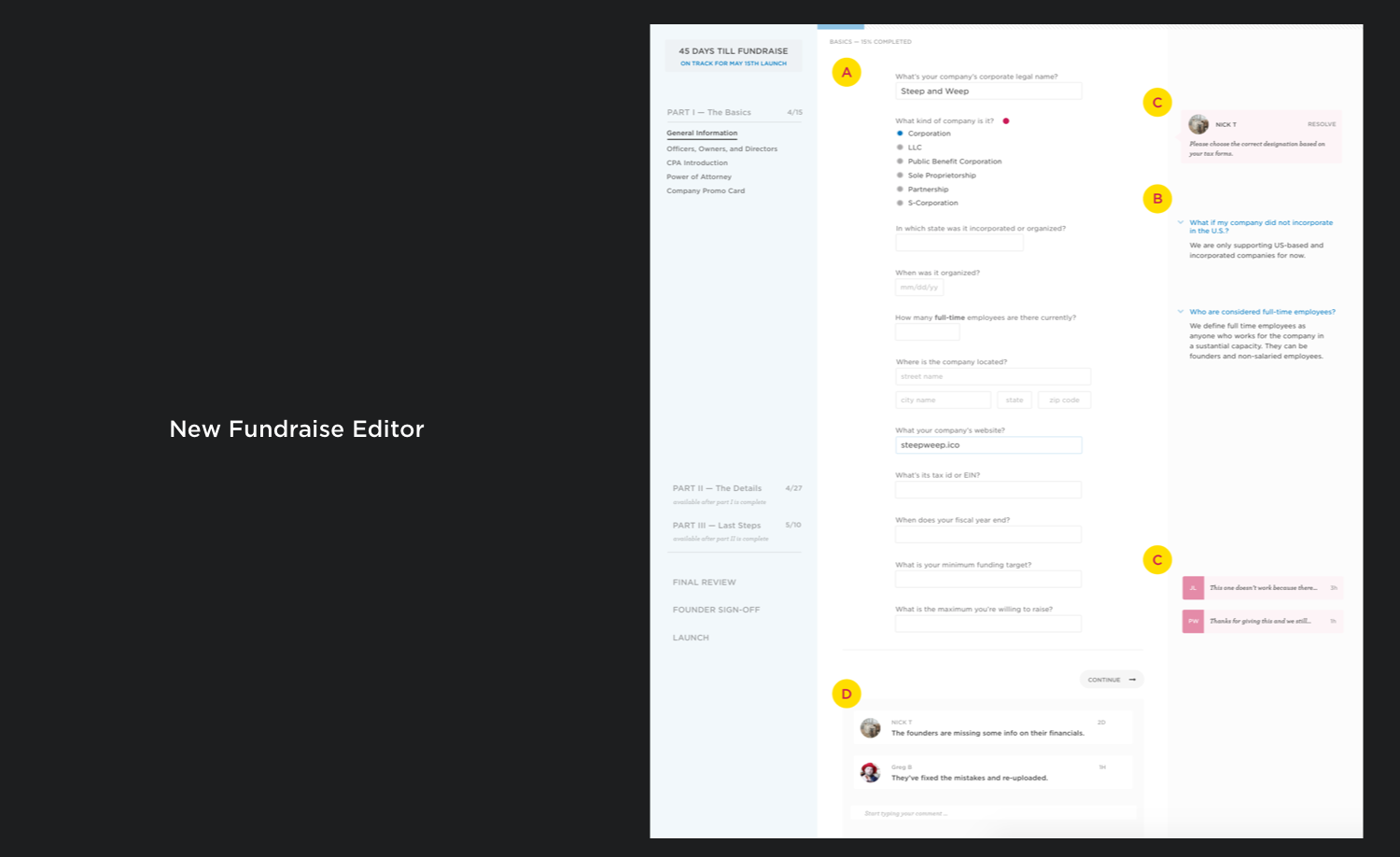
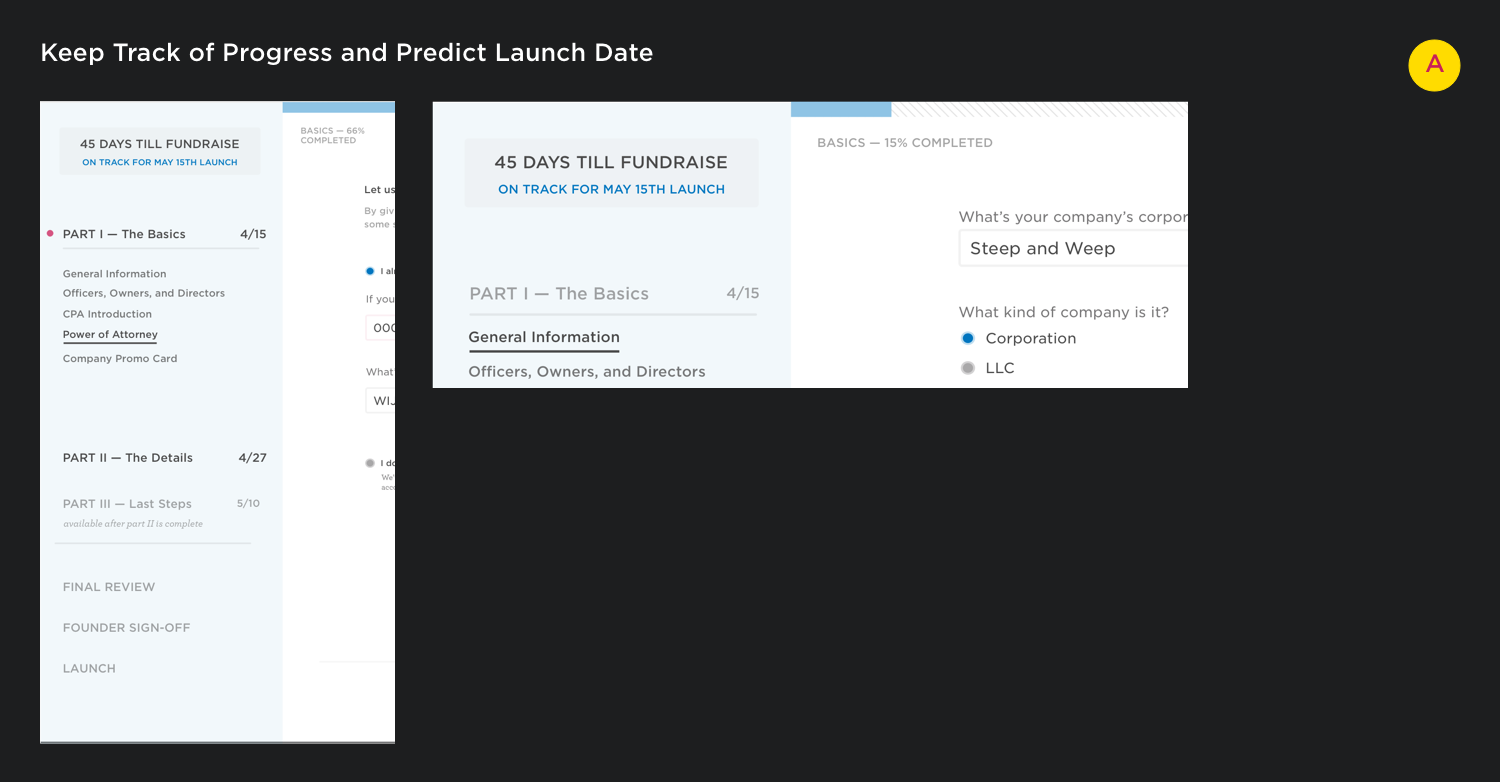
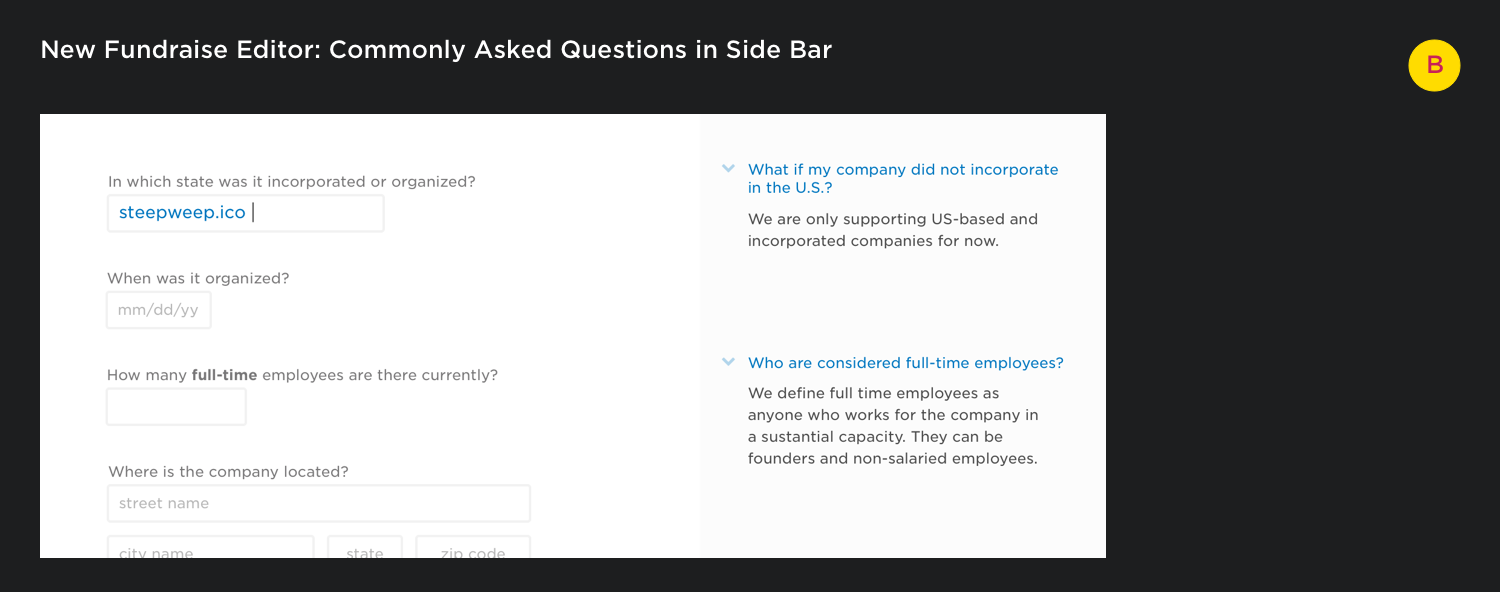
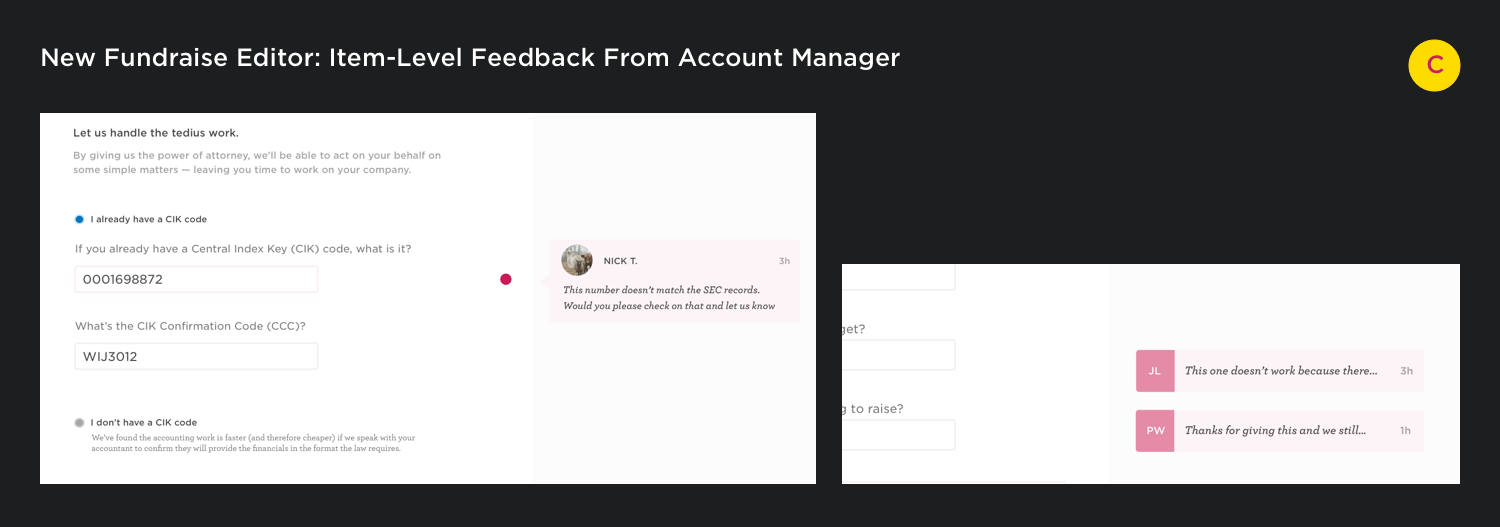
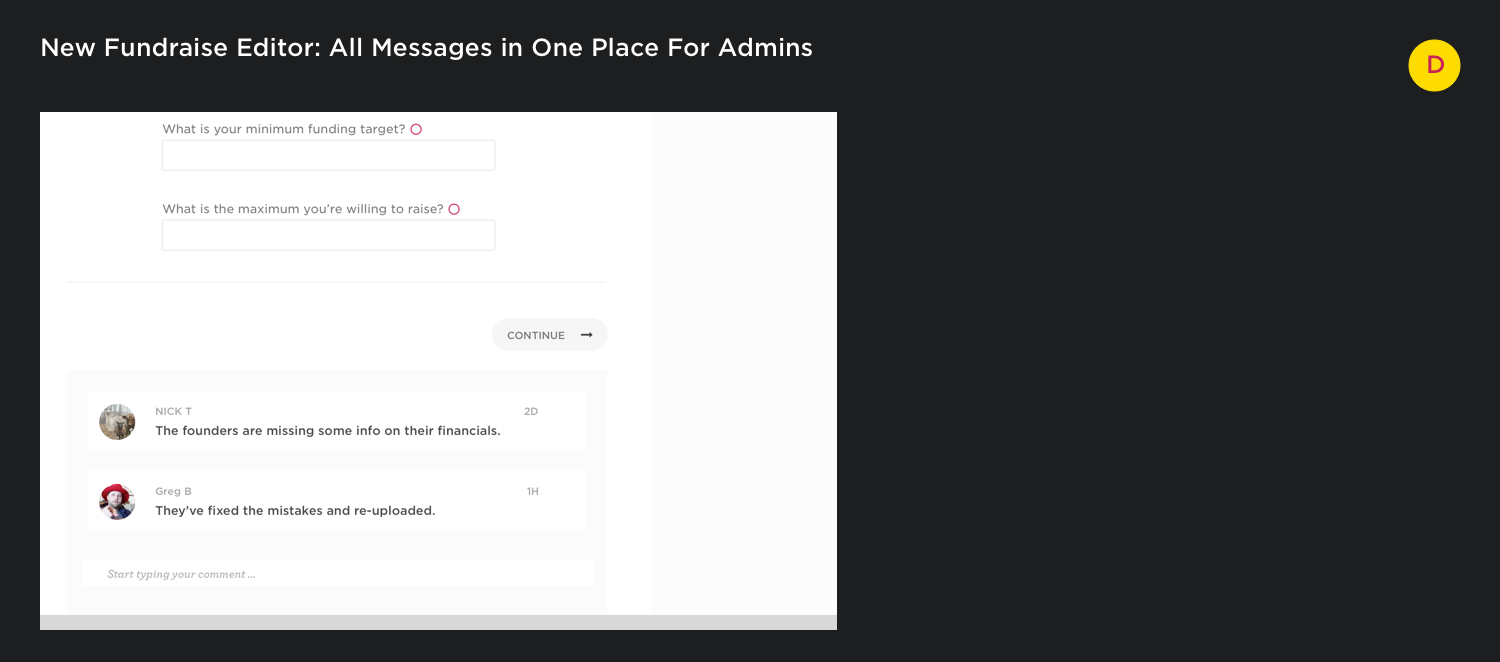

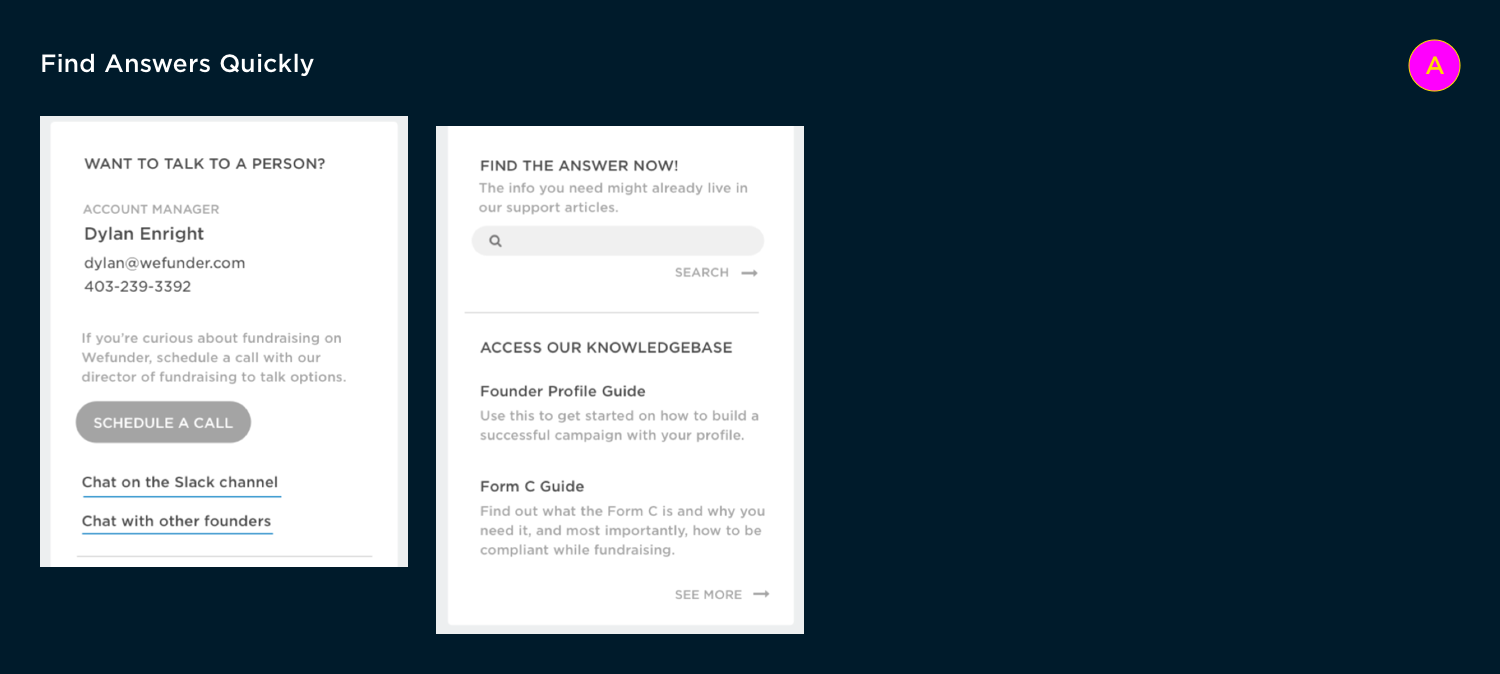
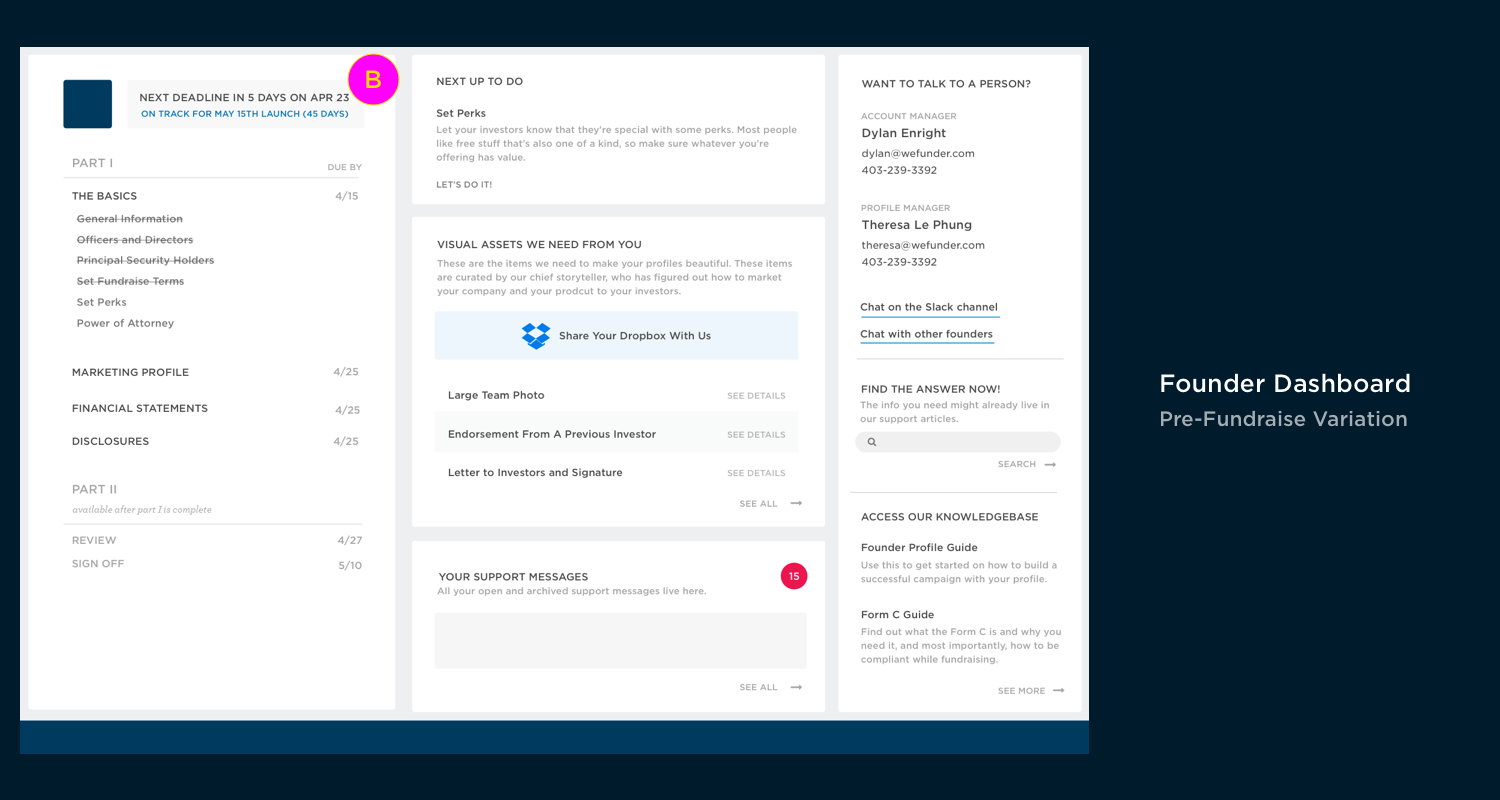
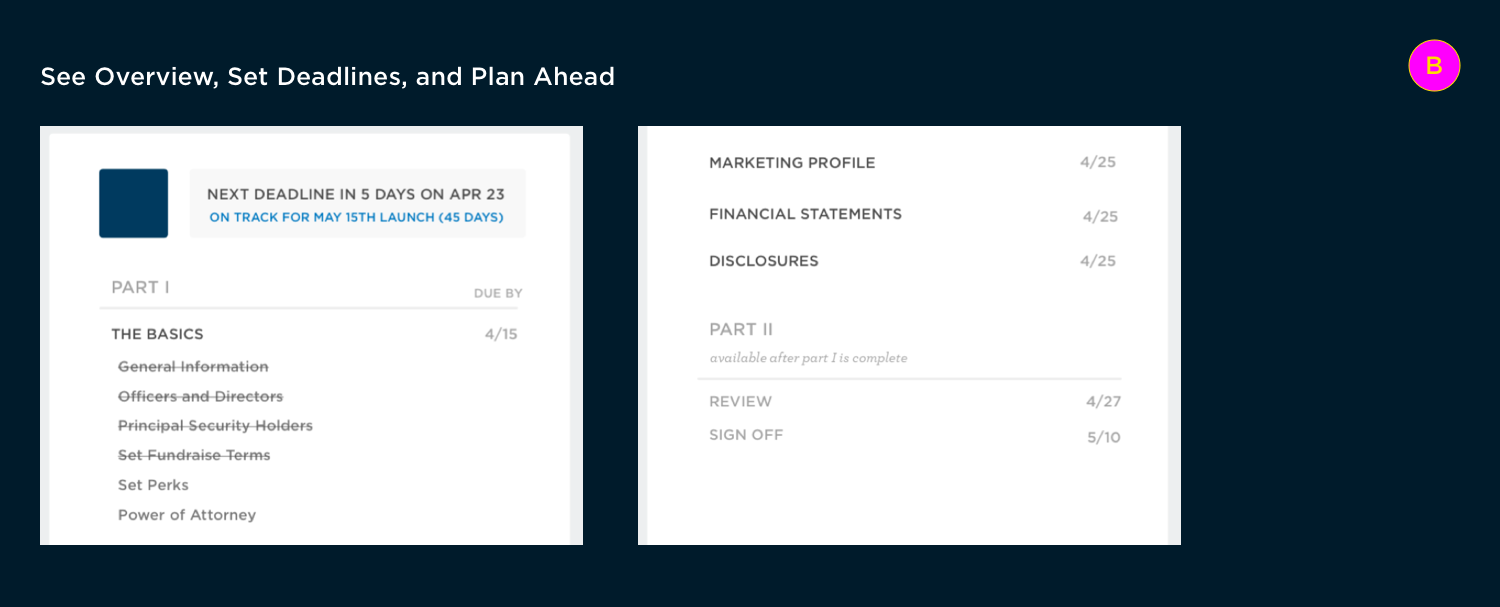
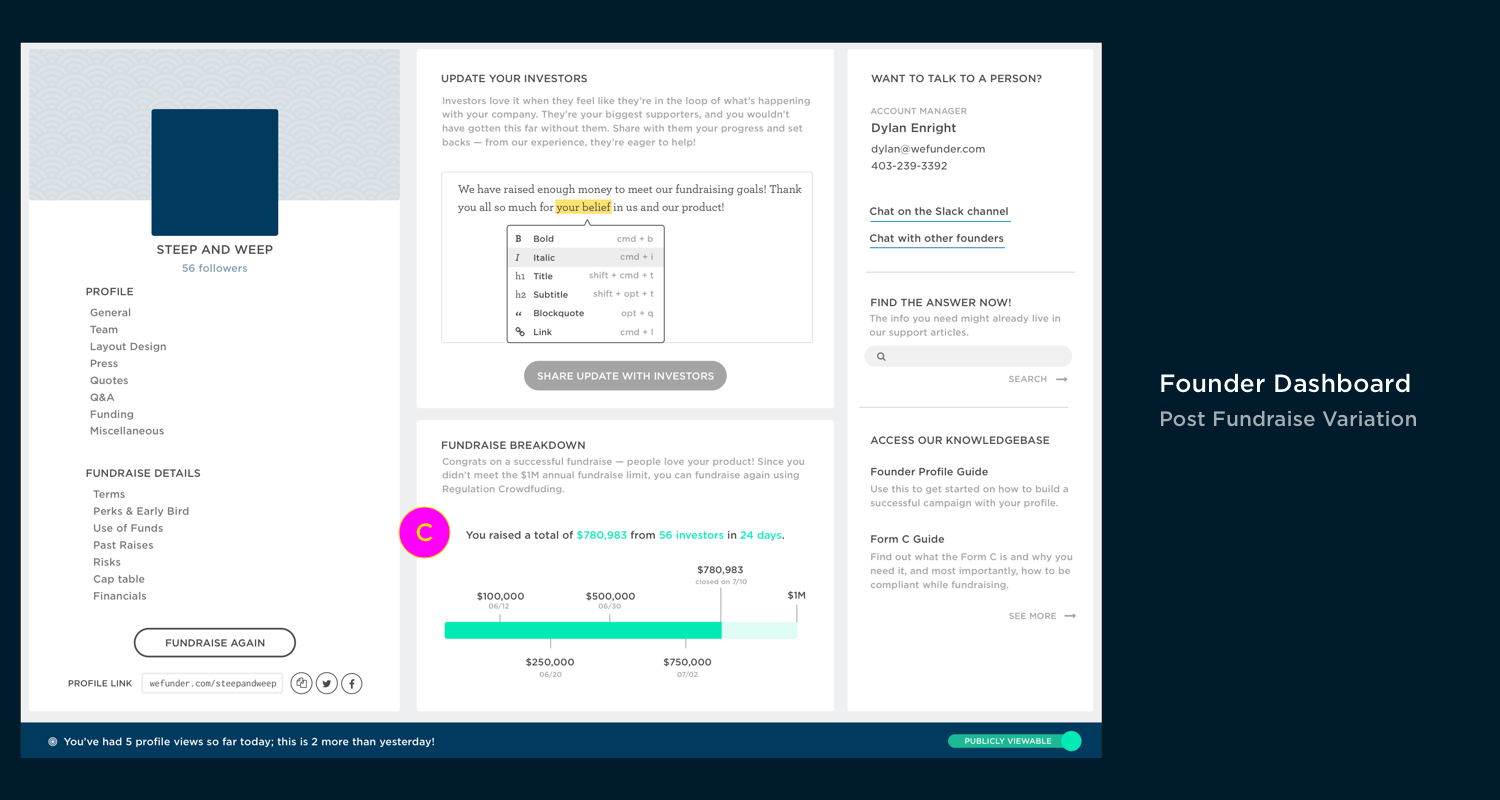
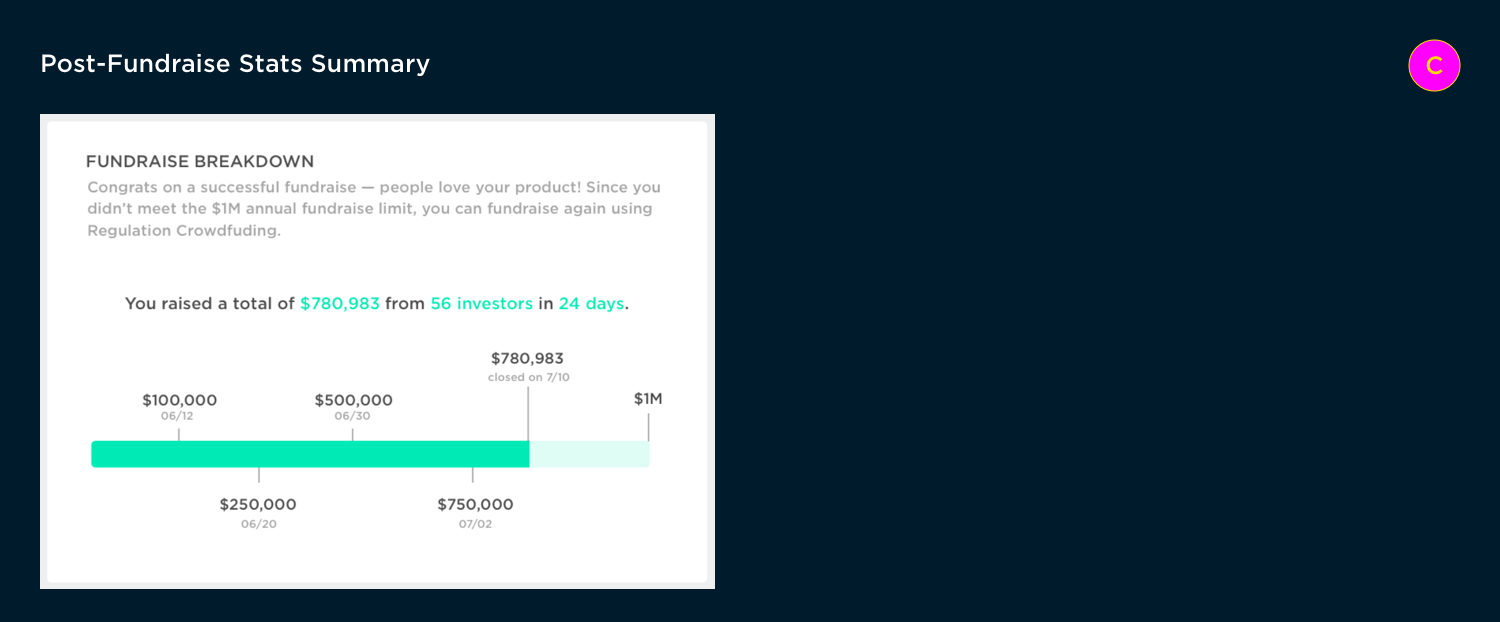
Takeaways
Giving founders agency empowered them to do more, faster, which helped the Wefunder team cut down on resources spent on each fundraise setup. Building the new tools improved communication between the team and founders dramatically — the support messages we got dipped close to 50%. Talking to team members about my research findings helped them develop a shared vocabulary when referring to different portions of the process. Within a month of implementation, the metrics set out in the beginning of the project were met. Instead of only launching 3 or 4 companies a month, the team is now launching 3 or 4 per week (that’s a 400% increase)!
Following my intuition and diving deep to understand the underlying issues that were affecting the fundraise creation process helped to boost team morale and improve trust between our users and the team. Working closely with the fundraising team and the CEO while looping in the engineers early in the design process helped me design solutions that provide maximum value and ensured successful delivery of the project.


